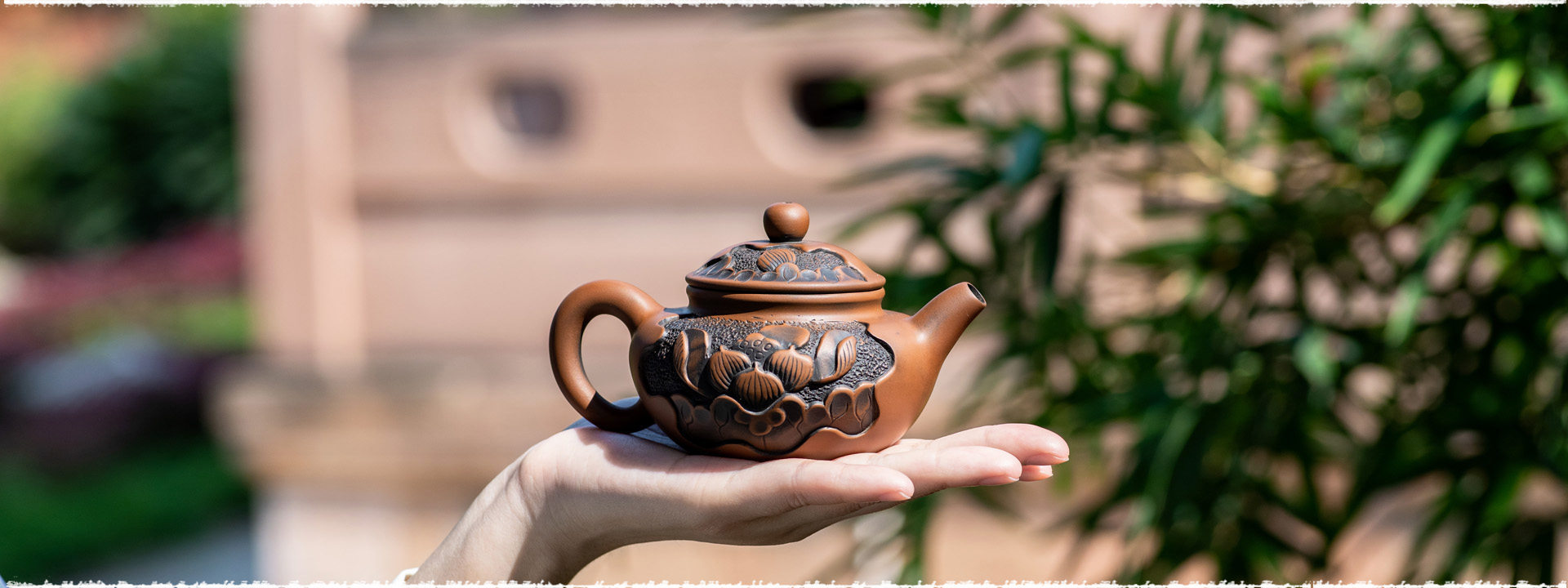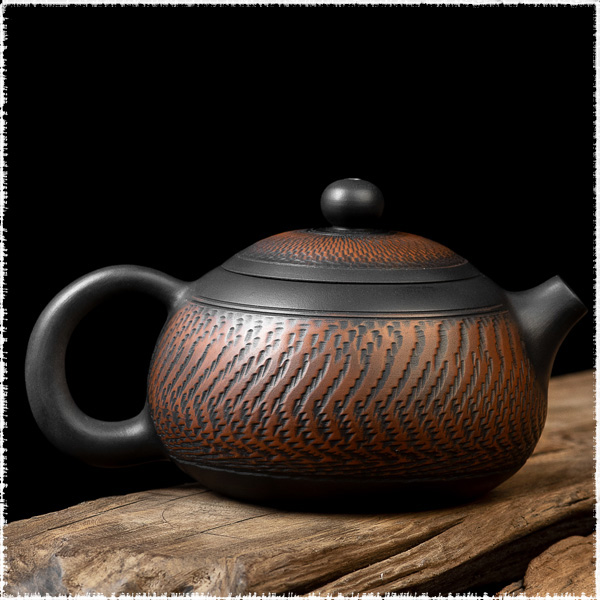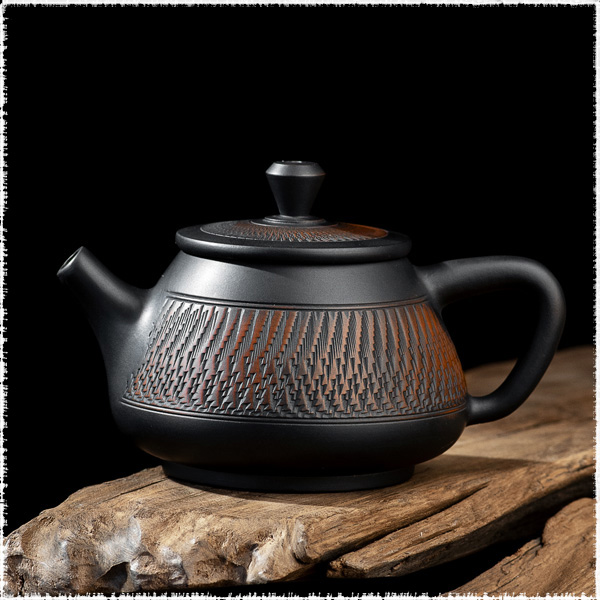Jianshui Zitao purple pottery has a long history (thousands of years) of artistic value and enjoys a high reputation as one of China’s four famous potteries. It is famous for its distinct and unique craftsmanship, which is not only plays an important role in the development of the Chinese ceramics market, but it is also a component of global pottery craftsmanship. Jianshui purple pottery engraves decorative patterns on the surface of the pottery, such as beautiful lines, characters and paintings, expressing the artistic beauty of pottery craftsmanship. This is the primary distinction between Jianshui Zitao pottery and other craft products.
Jianshui Zi Tao Purple Clay Teapot is a common kung fu teapot. Craftsmen create it in various art forms. It has many craftsmanship and clay properties that other types of pottery do not have. In this article, I will share with you the most common decorative techniques used on making Jianshui purple pottery teapot:
一 阴刻阳填 Yin Ke Yang Tian (Yin Carving Yang Filling)
二 浮雕 Relief Carving
三 镂空 Hollowing Out
四 根艺\仿生 Root art \ Bionic
五 跳刀 Tiao Dao (“jumping knife”)
一【阴刻阳填】 Yin Ke Yang Tian (Yin Carving Yang Filling)
Yin Ke Yang Tian is the unique decorative craftsmanship of Jianshui purple pottery. “Yin” and “Yang” here are neither the “Yin-Yang” in the simple world view of ancient China, nor the “Yin-Yang” in Buddhism and Taoism. The “Yin-Yang” here refers to the specific meaning, that is, two special engraving methods, Yin carving and Yang carving. Yin carving is to carve out three-dimensional lines beneath a planeobject; Yang carving is to carve out three-dimensional lines above a plane object. In Jianshui purple pottery, the “Carving” is to engrave the part where the strokes are located, and carve into a groove, so it is called “Yin Carving”.
Filling is the inverse of engraving, which is to fill the prepared colored mud into the carved grooves.
Ying engraving: the artist will draw different image based on the different shapes of the vessel and then do the engraving. The depth of engraving and filling is best at 2-3mm. If it is too deep, the bottom will be exposed and the vessel will be deformed; if it is too shallow, part of the image will be lost when the vessel is repaired. As a result, uniform depth and vertical cutting are required when engraving.


Yang filling: After engraving, deal with the areas where the bottom surface is too convex or concave. Then the mud is filled in. The humidity of the mud to be filled in depends on the size of the carved surface. The thin lines need to be filled with a higher humidity to allow the mud penetrate well and avoid air inside. If the space is large, it can be filled with lower humidity mud. If it is too wet, the mud will flow on the facet and make it difficult to control.
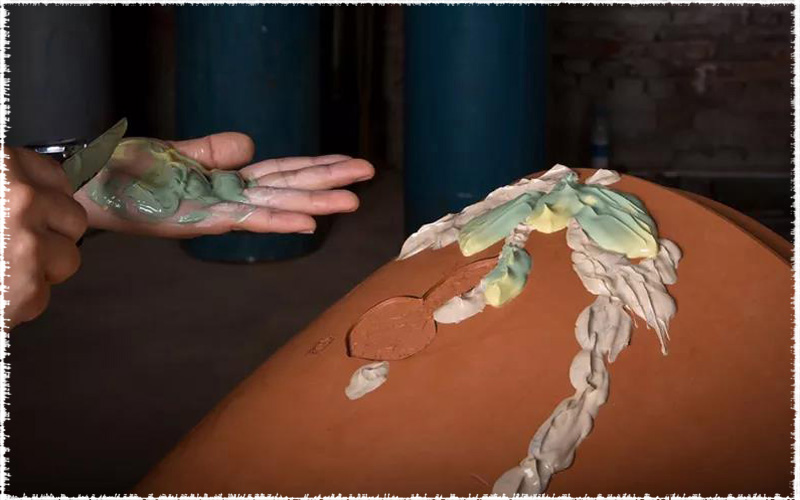

1. Filling with mud of a single color
This decorative content is monochrome by using single color mud. Filling the outline of the decorative drawings with monochrome mud creates a simple and elegant effect.
2. Multi-filling
It also refers to the decoration method in which the image of the picture must be completed with two or more colors engraving and filling. By this crafts, the color of the product is rich, but the process is complicated. Because the muti-filling requires excessive engraving and filling, the vessel will be thin and hard to withstand the firing step. The humidity of the color mud differs from that of the pottery blank, as does the shrinkage rate. Because muti-filling also needs to be pressed repeatedly, it is prone to deformation, resulting in a low yield.
2. Broken Decoration (Cán Tiē Decoration)
Broken Decoration is also a representative of Yin Ke Yang Tian (Yin Carving Yang Filling). With traditional calligraphy as the decorative theme, the ink drafts of all the blocks are drawn on the surface of the wet pottery blank. Then all the ink blocks are carved into molds and natural pottery clay color mud will be embedded in the decorative area of the pottery blank. Different decorative contents are written and painted on different surfaces, and the decorative contents are alternated several times, layer by layer. The comprehensive treatment of techniques results in the appearance similar to “broken pieces”.

二【浮雕工艺】 Relief Craftsmanship
Relief is a kind of sculpture, which is the combination of sculpture and painting. There are three common Relief Crafts for Jianshui purple pottery: dry utensil blank relief, wet utensil blank relief, and pile carving.
Relief Craftsmanship on wet Jianshui Zitao utensil
It is common to make the relief crafts on the wet teapot before firing the final product. By this way, the teapot should be made thicker. Outline the desired engraving on the wet blank, and then carry out the engraving. The different shades emphasize the image and the overall sense of hierarchy.
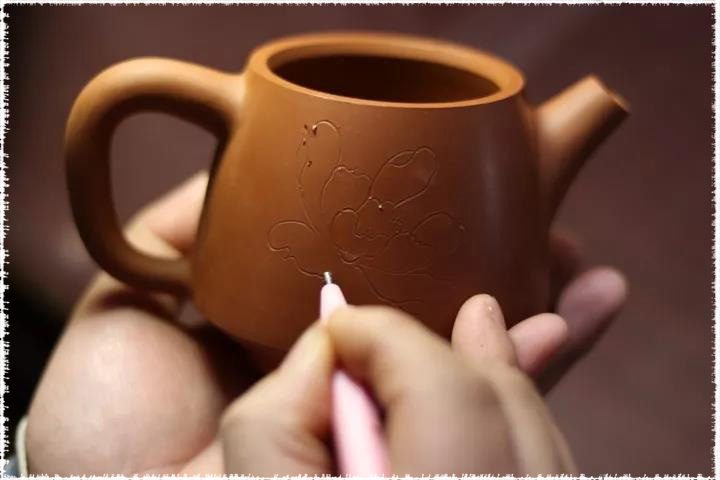
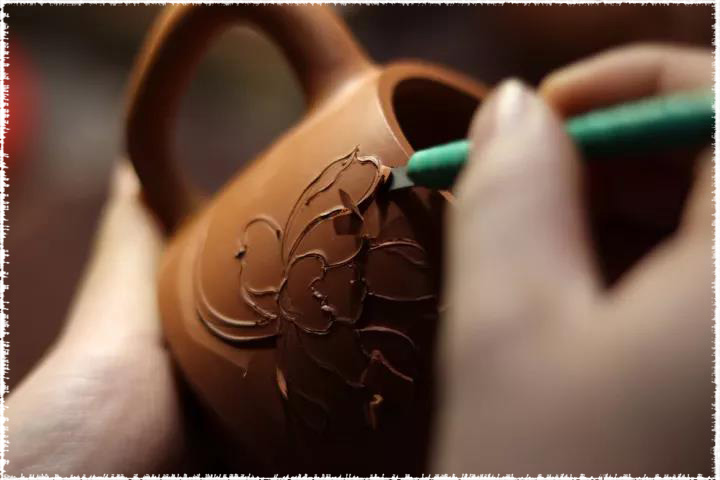
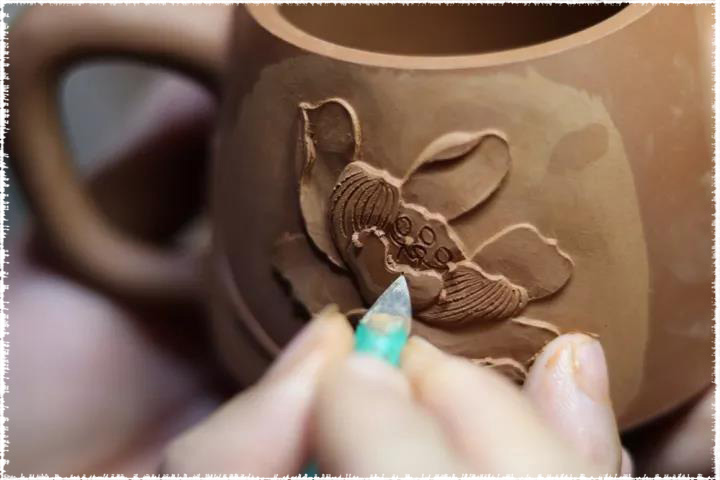
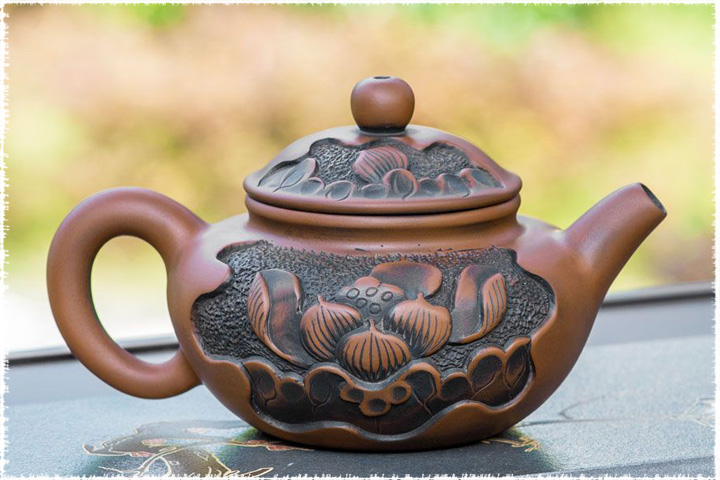
Handmade Jianshui Zitao Pottery Teapot – Lotus Fanggu
Pile Carving
Pile carving is to add mud to the teapot body to make the decoration. It is to make on the wet blank. The decoration and the teapot are not on the same surface. The relief sculpture is carved on the surface of the teapot, whereas the Pile Carving is to add mud to make the decoration. The majority of Pile carving takes the form of landscape.
The pile carving shape is the overall embossing on the surface of the pottery, forming a relief with distinct concave and convex edges and has a three-dimensional beauty.
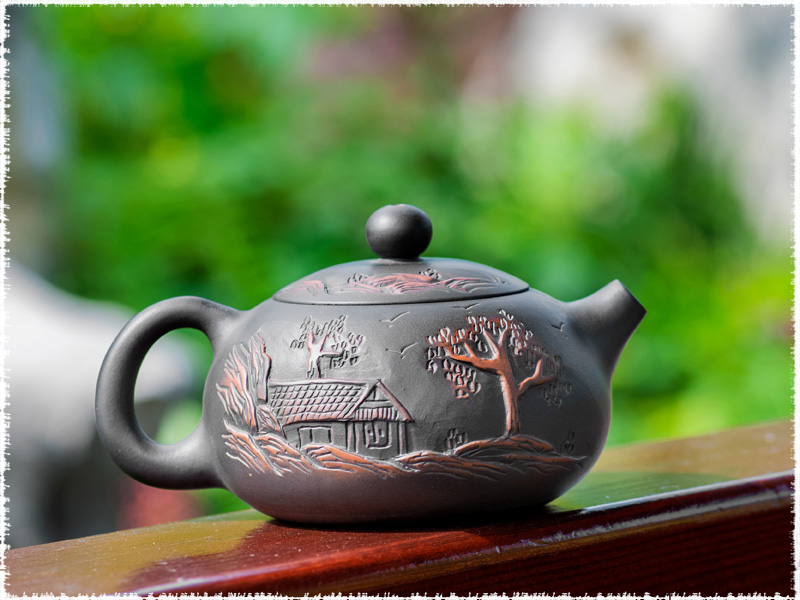
Handmade Jianshui Zitao Pottery Teapot – Landscape Xishi
三【镂空工艺】 Hollowing Out Craftsmanship
Hollowing is an engraving technique that involves carving patterns that penetrate objects on the teapot. Hollow carving is the most critical stage of creation. When processing this craftsmanship, the maker should obey the needs of the subject content, make everything integrated smoothly. At the same time, the Jianshui purple pottery pot blank is easily deformed, carving is difficult, and the yield is extremely low due to the flexibility of knife methods such as punching, scratching, cutting, and scraping.

四【根艺\仿生】 Root art \ Bionic Craftsmanship
Root art craftsmanship, also known as bionics, is common on Jianshui Zitao Jar, teapot, tea cup, etc. This process is to add mud to make tree roots and other shapes when Jianshui purple pottery pot is wet, use blades and other tools to make bark texture, and then use color mud to embellish flowers, etc. The overall impression is bionic, ancient and natural.
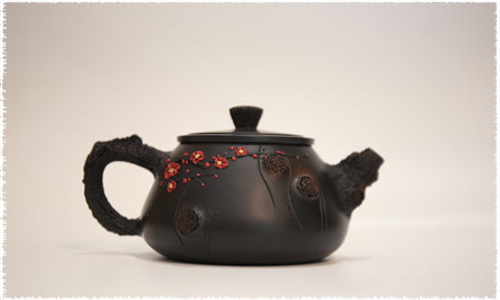
五【跳刀工艺】 Tiao Dao (“jumping knife”) Craftsmanship
As the name implies, the jumping knife is to use knife flexibly carving on the teapot. Make beautiful knife carving texture.
With the continuous development of Jian Shui Zi Tao, there will be more Crafts / Techniques introduced.
If you enjoyed this article, you might also like to read the following articles:
A Brief Introduction to Four Famous Types of Potteries in China
Jianshui Zi Tao Purple Pottery Teapot – One of China’s Four Famous Pottery
Making Process of Jianshui Zi Tao Purple Pottery Clay Teapot
How to Choose a Proper Yixing Teapot for a Single Type of Tea
 Exploring the Charms of 2024 Spring Tea Garden with Angel
Exploring the Charms of 2024 Spring Tea Garden with Angel Yingde Black Tea
Yingde Black Tea Matcha vs. Green Tea Powder
Matcha vs. Green Tea Powder
